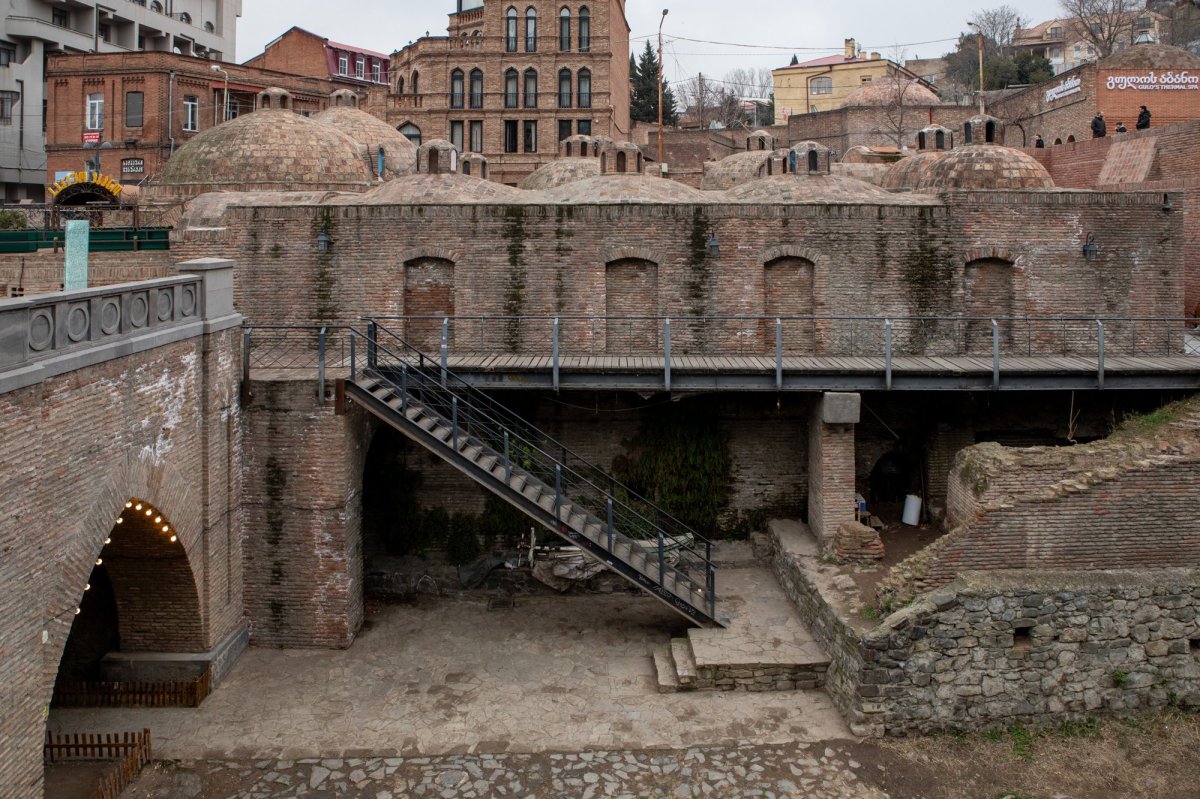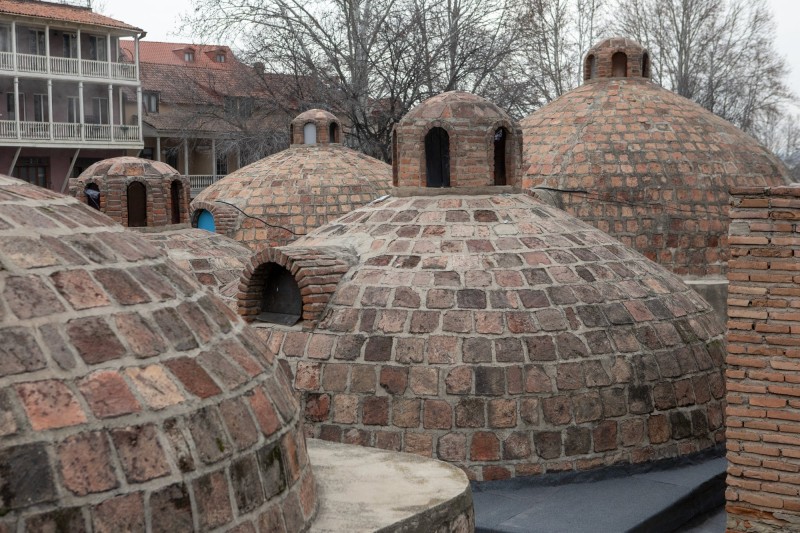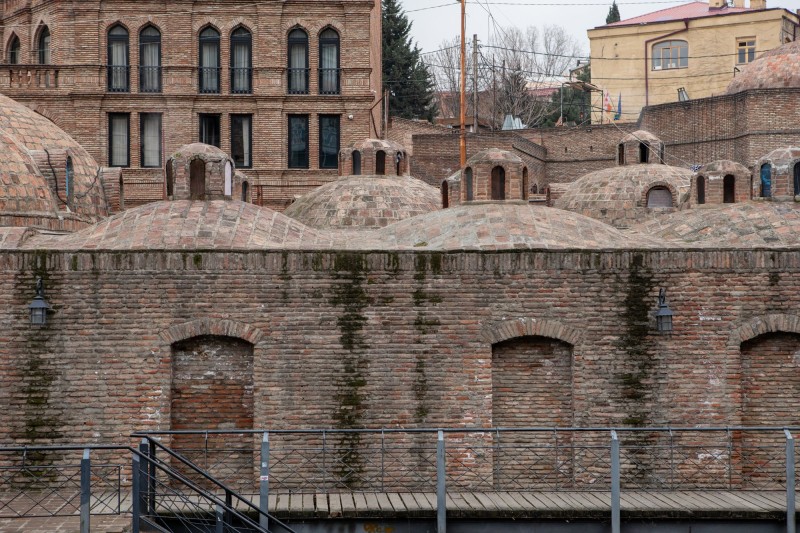
Information in details
The bathhouse built in the first half of the 17th century, located at 1, Grishashvili St. was called "Meitari" on the 19th-century Tbilisi plan, and later it was called Sumbatov's (Sumbatashvili's) bath. By 1822, a part of the Sumbatashvili's bath was bought by a certain Kiya Vazirov, in the documents he is Sumbatashvili's companion. It can be seen that until recently there was a common bath for men.
It was built with bricks and has a specific character due to its functional purpose; It was originally built as a bathhouse. It is the specificity of the architecture and the clearly expressed oriental character that gives the building a special charm and determines its outstanding urban value for the city. The main part of the building is two-story and consists of single, blank, high, massive walls. Their main decoration is formed by arched concave niches placed in the thickness of the wall. The most artistically loaded part of the building is its roof. Large and small, strongly convex spherical or low, saucer-like domes are gathered here, which, in turn, are covered by small "caps" opened by arches from all sides, a kind of lantern. In the end, the building gives the impression of a single ensemble composed of small domed buildings. A significant load is given to brick as a building material because its artistic and decorative possibilities are used to the maximum extent. The alternation of vertical and horizontal stacking of bricks allows to creation of any circular or rounded shape. The boiling layer between the bricks becomes one of the main textural features of the architecture of the baths. In addition, each dome type of roofing includes a lot of different, different shapes and individual details in itself. Before joining the massif of the wall directly, it divides into steps, arches and semi-arches, basic squares, and corner-shaped ledges. A staircase descends from the central entrance, where large halls and relatively smaller rooms of various shapes are located."


 თბილისი, Grishashvili Street N1
თბილისი, Grishashvili Street N1
 41.6881503, 44.8108817
41.6881503, 44.8108817




